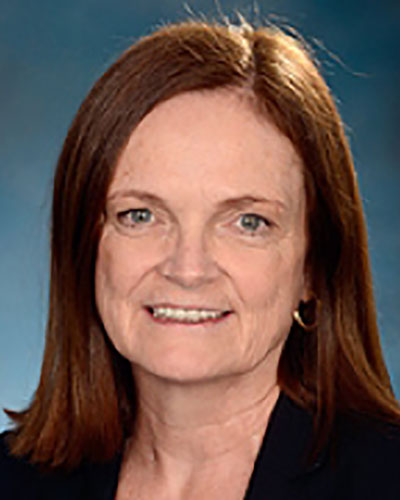May 24, 2016 | Karen Warmkessel

Findings Suggest Fat Intake May Affect Health Decades Later
Adolescent girls whose diet is higher in saturated fats and lower in healthier unsaturated fats have higher breast density in early adulthood, which may potentially increase their risk for breast cancer later in life, according to a new study led by researchers at the University of Maryland School of Medicine. The research was published last week in Cancer Epidemiology, Biomarkers & Prevention.
Saturated fats are those abundant in meat, cheese, butter and other dairy products while rich sources of unsaturated fats include nuts, avocados and vegetable oils.
“Our results suggest possible long-term effects of fat intake during adolescence on young adult breast composition,” says the study’s lead author, Seungyoun Jung, DSc, a postdoctoral fellow in the Department of Epidemiology and Public Health at the University of Maryland School of Medicine. “This is the first comprehensive prospective analysis to examine the long-term effect of adolescent intake of subtypes of fat on breast density.”
Breast density reflects the proportion of glandular and stromal tissue to fatty tissue. Studies have shown that breast density is a strong risk factor for breast cancer, and the risk of breast cancer increases as breast density increases, although the reasons remain unclear. In a 2006 meta-analysis, women with the densest breasts were approximately four times more likely to develop breast cancer compared to those with the least-dense breasts.
“If confirmed, our findings suggest paying attention to the type of fat consumed during adolescence for potential early prevention of chronic disease later in life,” Dr. Jung says. “Appropriate dietary modifications during adolescence may potentially contribute to lowering breast density and possibly breast cancer risk as well as preventing chronic conditions such as obesity, diabetes and cardiovascular disease.”
Joanne F. Dorgan, PhD, MPH, professor of epidemiology and public health at the University of Maryland School of Medicine, notes that breast tissue is thought to be particularly sensitive to various influences during adolescence as the breasts develop and change.
“The effect of dietary fat intake on the breasts, therefore, might be greater at younger vs. older ages, possibly explaining the lack of association between fat intake and breast cancer risk in previous studies of adult women,” says Dr. Dorgan, who is co-leader of the Population Science Program at the University of Maryland Marlene and Stewart Greenebaum Cancer Center.
Drs. Jung and Dorgan say additional research in a larger, more ethnically and racially diverse population is needed. Their findings are based on an analysis of 177 women, most of them Caucasian. “Further cohort studies are warranted to replicate our findings, validate whether they are independent of other components in food sources for fat, and identify underlying mechanisms,” they conclude in the journal article.
The researchers analyzed the adolescent fat intake of women who participated in the Dietary Intervention Study in Children (DISC). Researchers enrolled 8- to 10-year-old children at the initiation of the study and followed them through their teenage years, obtaining data about their diet on multiple occasions.
In a follow-up DISC study when participants were 25-29 years of age, researchers measured percent dense breast volume, a three-dimensional measurement of breast density in 177 of the women, using magnetic resonance imaging (MRIs).
After making adjustments for a number of factors, the investigators observed that participants who reported consuming higher amounts of saturated fat and lower amounts of mono- and polyunsaturated fat during adolescence had higher percent dense breast volume measured approximately 15 years later. Though differences in percent dense breast volume were modest, averaging less than 10 percentage points between highest and lowest consumers, because breast cancer risk increases with increasing breast density, they are potentially of interest, the researchers say.
E. Albert Reece, MD, PhD, MBA, vice president for medical affairs at the University of Maryland and the John Z. and Akiko K. Bowers Distinguished Professor and dean of the University of Maryland School of Medicine, says such research is vitally important to preventing cancer and other diseases.
“Most of the well-known factors for evaluating breast cancer risk, such as the starting age of menstruation and the number and timing of pregnancies, offer little opportunity to intervene,” Dr. Reece says. “This study suggests that dietary modifications, such as reducing consumption of saturated fat or increasing intake of unsaturated fats earlier in life, may possibly play a role in not only helping prevent breast cancer but also a number of chronic diseases later in life.”
The journal Cancer Epidemiology, Biomarkers & Prevention is published by the American Association for Cancer Research (AACR). The research was supported by the American Institute for Cancer Research, the National Cancer Institute, and the National Heart, Lung and Blood Institute.
About the University of Maryland School of Medicine
The University of Maryland School of Medicine was chartered in 1807 and is the first public medical school in the United States. It continues today as an innovative leader in accelerating innovation and discovery in medicine. The School of Medicine is the founding school of the University of Maryland and is an integral part of the 11-campus University System of Maryland. Located on the University of Maryland’s Baltimore campus, the School of Medicine works closely with the University of Maryland Medical Center and Medical System to provide a research-intensive, academic and clinically based education. With 43 academic departments, centers and institutes and a faculty of more than 3,000 physicians and research scientists plus more than $400 million in extramural funding, the School is regarded as one of the leading biomedical research institutions in the U.S. with top-tier faculty and programs in cancer, brain science, surgery and transplantation, trauma and emergency medicine, vaccine development and human genomics, among other centers of excellence. The School is not only concerned with the health of the citizens of Maryland and the nation, but also has a global presence, with research and treatment facilities in more than 35 countries around the world. medschool.umaryland.edu/
About the University of Maryland Marlene and Stewart Greenebaum Cancer Center
The University of Maryland Marlene and Stewart Greenebaum Cancer Center, a National Cancer Institute-designated center in Baltimore affiliated with the University of Maryland Medical Center and University of Maryland School of Medicine, offers a multidisciplinary approach to treating all types of cancer and has an active cancer research program. It is ranked in the top 50 cancer programs in the nation by U.S. News & World Report. www.umgcc.org.
Learn More
Contact
Department of Anesthesiology
(410) 328-6120 (phone)
(410) 328-5531 (fax)
newsletter@som.umaryland.edu
Karen Warmkessel
Media Relations
410-328-8919
kwarmkessel@umm.edu
Related stories

Wednesday, March 16, 2016
UM SOM Epidemiologist Joanne F. Dorgan Named Director of the Division of Cancer Epidemiology
Jay S. Magaziner, PhD, MS Hyg, Professor and Chair of the Department of Epidemiology and Public Health (EPH) in the University of Maryland School of Medicine (UM SOM), along with UM SOM Dean E. Albert Reece, MD, PhD, MBA, announced today that Joanne F. Dorgan, PhD, MPH, Professor in the Division of Cancer Epidemiology within the Department of Epidemiology and Public Health, has been appointed Director of the Division of Cancer Epidemiology. Dorgan succeeds Division Director William A. Blattner, MD, co-founder and associate director of the UM SOM Institute of Human Virology, who retired on January 31, 2016.
